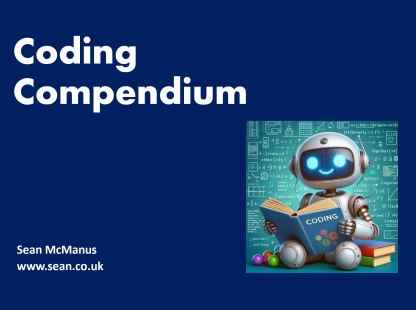
Coding Compendium
A free 100-page ebook collecting my projects and tutorials for Raspberry Pi, micro:bit, Scratch and Python. Simply join my newsletter to download it.

My first computer was an Amstrad CPC464, a home computer that had a then-massive 64k of memory and a built-in tape deck. At first, I had the green screen version. I later upgraded to an Amstrad CPC6128 with a disc drive.
Today, I write books about computers and technology, and I think a lot of us who work with computers today are able to do so because of what we learned on those 8-bits in our bedrooms.
The Amstrad also gave me my first opportunities to be published. During the 1990s I contributed type-ins and the odd article to Amstrad Action and Amstrad Computer User. In 1993, I wrote the advanced Amstrad Basic programming book 'The Basic Idea'. Now you can download my Amstrad games and utilities and read the book in full online.
You can now play many of my Amstrad CPC games using an online emulator, without needing to install an emulator or download the disc file separately. Thank you to Andre Weissflog, who created the emulator, and to Amstrad who allow the CPC ROMs to be used in emulators.
For programs that appeared in magazines as listings or type-ins, I've included scans of the magazine pages online so you can see the code as it appeared in print.
| You can download my Amstrad CPC games and utilities disc to use these programs in your favourite emulator. |
Need help using an Amstrad CPC emulator?
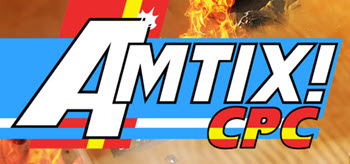 Amtix magazine is being published again, now as a full-colour A5 quarterly magazine. Find out more about the revived Amtix in my blog post, which includes my "Doctor, Doctor!" listing for speech synthesisers.
Amtix magazine is being published again, now as a full-colour A5 quarterly magazine. Find out more about the revived Amtix in my blog post, which includes my "Doctor, Doctor!" listing for speech synthesisers.
You can also read (and listen to) my article Top of the CPC Pops, counting down the biggest pop hits to feature in Amstrad games.
Find out about the Amtix! CPC Annual 2023 here.
This Amstrad Basic programming tutorial was commercially published as 'The Basic Idea' by Campursoft and was awarded 85% in Amstrad Action's review (May 1994), which concluded "it's difficult to see how Campursoft managed to come up with a tutorial that will not only hold your attention long enough to shove information down your throat, but will be friendly and straightforward enough that you'll want to swallow." I've put the whole tutorial online now, and you can get the demonstration programs on my Amstrad disc.
B is for Basic: Discovering the joy of Amstrad CPC Basic
This article introducing Amstrad Basic appeared in Wacci as part of its 'A-Z' of the Amstrad, and introduces Amstrad Basic and the programming culture that surrounded the machine.
A comedy of errols: Debugging common errors in Amstrad Basic programs
How to debug Amstrad Basic programs, including a quick lookup table for each error message.
Downgrading: How to convert Amstrad CPC6128 programs to the CPC464
How to make programs for the Amstrad CPC6128 or CPC664 work on the 464. Includes a table of commands that don't work on the 464, and a routine to add FILL to the CPC.
The protection racket: Protecting Amstrad basic programs
How to protect your Basic programs, and circumvent some of the common protection methods.
A character building experience: How to define your own characters in Amstrad Basic
Exploring user defined graphics, used for creating customised typefaces and special effects. This section includes a lookup table of control codes, together with demonstrations of how they can be used for screen layout.
The colour of magic: How to use colour swapping in Amstrad CPC Basic programs
By using colour swapping, whole screens can be quickly animated. This includes several demonstrations of the technique and full instructions to use it in your own programs.
This is a journey into sound: Creating music and sound on the Amstrad CPC
How to write sound effects and music for your games, including a sound effects editing program.
The road to code: Adding machine code to Amstrad CPC programs
How to integrate machine code with Basic programs. This includes a program for making DATA statements from code and some tips on using CALL and relocating machine code programs.
The sprite idea: How to make sprites for Amstrad CPC Basic programs
A full toolkit for putting machine code sprites into your Basic games is included on the disc. This extends the version which appeared on an Amstrad Action covertape with a more precise and more compact sprite driver.
Misfit: Sliding puzzle game for the Amstrad CPC computer
Bringing a lot of these techniques together is our final game, the sliding puzzle game Misfit.
This game is now playable online!
Hacking and updating The Further Adventures of Fred
In 2020, I revisited my machine code game The Further Adventures of Fred to see if I could improve it. There were things that always niggled me about the game. The question was: could I fix them, 30 years later?
You can now play the new version of The Further Adventures of Fred online!
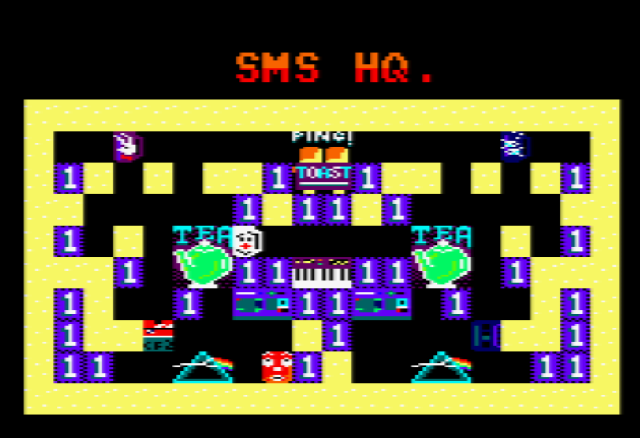
SMS HQ screen from The Further Adventures of Fred
How to copy and paste BASIC programs between the Winape Amstrad emulator and your Windows host machine
Have you found a listing online you want to paste into your emulator? Have you written a program in the emulator that you want to post as code online or contribute to a magazine? This tutorial shows you how to move BASIC code between the emulator and the machine running the emulator.
Book review: The Apprentice by Alan Sugar
Read my review of Alan Sugar's book accompanying the TV series.
Play my Javascript Games in your browser now
I have also written games you can play in your browser using Javascript.
© Sean McManus. All rights reserved.
Visit www.sean.co.uk for free chapters from Sean's coding books (including Mission Python, Scratch Programming in Easy Steps and Coder Academy) and more!

A free 100-page ebook collecting my projects and tutorials for Raspberry Pi, micro:bit, Scratch and Python. Simply join my newsletter to download it.
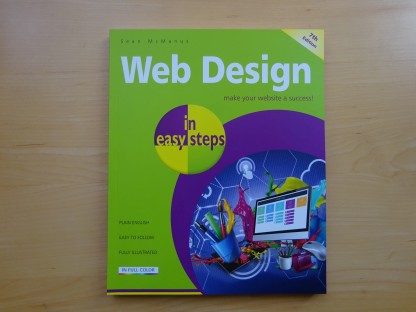
Web Design in Easy Steps, now in its 7th Edition, shows you how to make effective websites that work on any device.
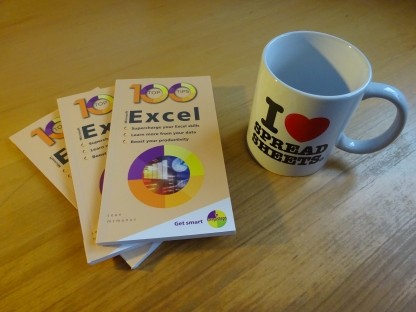
Power up your Microsoft Excel skills with this powerful pocket-sized book of tips that will save you time and help you learn more from your spreadsheets.
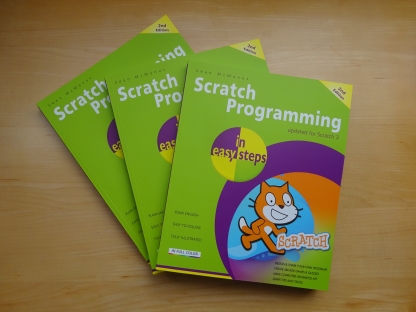
This book, now fully updated for Scratch 3, will take you from the basics of the Scratch language into the depths of its more advanced features. A great way to start programming.
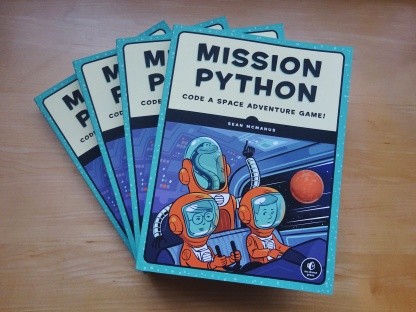
Code a space adventure game in this Python programming book published by No Starch Press.
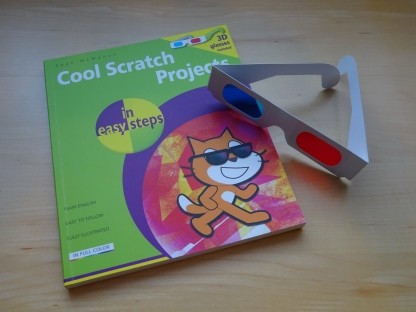
Discover how to make 3D games, create mazes, build a drum machine, make a game with cartoon animals and more!